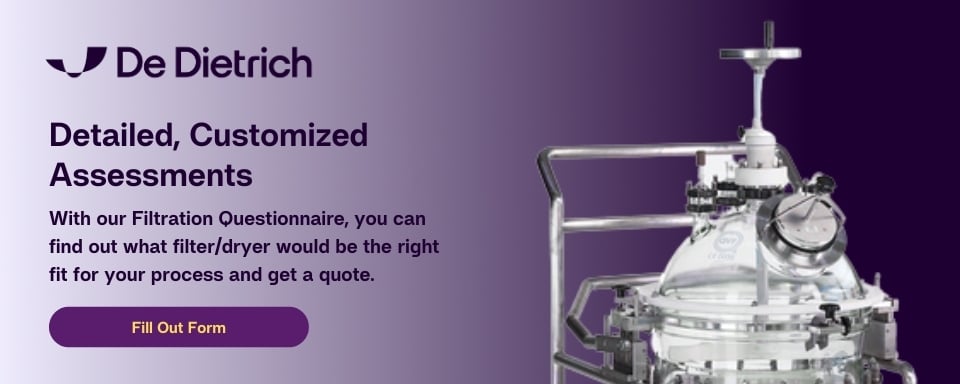Understanding the Nutsche Filtration and Drying Process
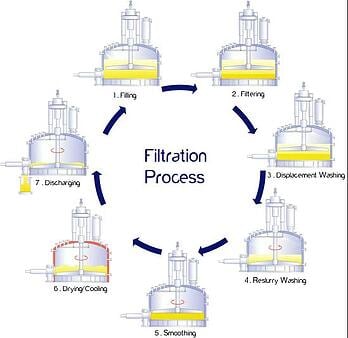
Filtration and drying are critical operations in a variety of industrial processes that require the separation of solid matter from a liquid. Solids can be discharged directly into a dryer, or in the case of a filter/dryer, the drying function is performed using the same equipment.
Filtration can be broken down into two types of processes – continuous and discontinuous (or batch) operations. Nutsche filtration, which we will be focusing on, is a batch filtration technique that uses vacuum and/or pressure in a closed vessel. Some benefits of using this technology include product isolation, minimal operator exposure, reduced product handling, and environmental protection against solvent vaporization. Additionally, the level of containment supplied can comply with GMP and other health and safety requirements that companies often face. For these reasons, nutsche filter/dryers are commonly used in pharmaceutical, fine chemical, dye and paint production, and waste water treatment applications.
So what exactly goes on in this closed vessel from start to finish? Here’s a closer look at the seven basic steps that comprise the typical filtration and drying process in nutsche filter/dryers.
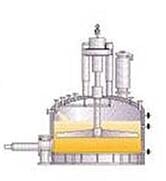 1. Filling/Charging
1. Filling/Charging
The first step involves the transferring of the product to be filtered, usually an aqueous or solvent based solid/liquid slurry, from the primary location (e.g. reactor) to the filter/dryer. The filter should be sized appropriately to handle the solids volume that is being charged. A general rule of thumb to follow is that the maximum solids height should be equal or less than the agitator stroke, typically 12 - 20 inches.
2. Filtering
The second step involves the use of pressure and/or vacuum to force liquid through the solid bed and filter media. The process is stopped when solids are visible, or can be continued until all the liquid is pushed out. There are various types of filter media available in nutsche filters – cloth, single layer metal screen, or multi-layer sintered metal. The media should be determined based on the characteristics of the slurry including particle size and shape, cake porosity, and compressibility (which are all factors that, when taken into account with the filter media selected, will determine filtration rate).
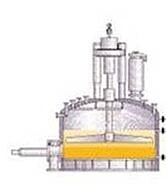 3. Displacement Washing
3. Displacement Washing
Here, fresh wash liquid is sprayed on top of the solid cake taking care not to disturb the surface of the cake. The liquid is forced through with pressure or vacuum. Displacement washing serves several purposes – it removes the liquid and its impurities while keeping the cake intact and it replaces the previous liquid with fresh liquid. There is also the opportunity prior to this step to try and close cracks if the cake has any via smoothing.
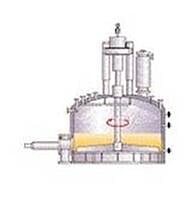 4. Reslurry Washing
4. Reslurry Washing
As an additional washing option, a re-slurry washing can be performed if additional extraction or dissolving of impurities is necessary. This is executed by the addition of fresh wash liquid that is mixed with the solids. The agitator is stopped and raised before filtering the wash liquid. The re-slurry process is also used when a long contact time is needed between the wash fluid and the solids or the displacement wash does not provide the required wash quality.
5. Smoothing
This next step may be used after any filtration or wash, especially after the final wash, when gas is blown through the cake. The agitator is used to close cracks and compress the cake to reduce residual moisture level. This function will help to achieve uniform flow of liquid or gas through the filter cake, while helping to eliminate liquid and gas channelling that reduces the efficiency of displacement washing and gas blow through.
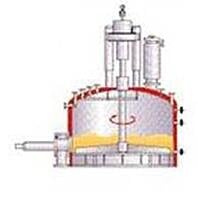 6. Drying/Cooling
6. Drying/Cooling
In most filter types, the solid must be evacuated into a second dryer to complete the drying and subsequent cooling process. In nutsche filter/dryers, the two functions are combined and drying can take place in the same vessel. To accomplish this, the vessel surfaces (including the wall, base, and agitator) are heated. There are two types of drying that can be conducted – vacuum drying and convection drying. The method used depends on the product behavior. Vacuum drying, the most common method, involves a vacuum source, agitation, and dust filter. This type of drying utilizes vacuum to reduce the temperature at which the solvent evaporates, reducing the average drying temperature. During convection drying, hot, pressurized gas (usually nitrogen) is blown down through solids and out of filtrate lines (and even recirculated as necessary); this will eventually dry the solids. Convection drying is unique to filter/dryers due to their porous filter plate. Unlike vacuum drying, it does not require agitation. Whether vacuum or blow-through drying is selected, a filter/dryer can allow you to get completely dry material out from your process, with less than 0.1% final product moisture. At this point the vessel and product may need to be cooled to an ambient temperature prior to discharge.
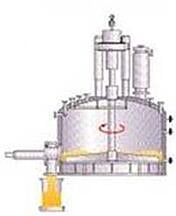 7. Discharging
7. Discharging
This final step is accomplished through the valve/port located on the vessel sidewall. The agitator is slowly lowered as it rotates, effectively moving product to the side discharge valve. There are certain applications where the desired product to be discharged is not a dry solid. Nutsche filter/dryers are designed to facilitate flexible discharge, which allows for wet solids, slurries, or even liquid to be discharged.
Understanding the steps that make up the nutsche filtration and drying process help to differentiate this equipment from other types of separation technology. What sets nutsche filter/dryers apart from other filtration units is their ability to carry out functions in a closed system under vacuum or pressure, which minimizes cake contamination and enables very high solvent recovery. From an environmental and personal health perspective, safety is maintained throughout the process. If you’re interested in how your process can benefit from nutsche filtration fill out our Filtration Application Questionnaire and we can provide you with a detailed, customized assessment of what equipment would be right for your process.
 1. Filling/Charging
1. Filling/Charging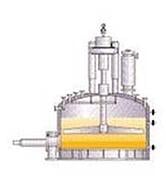
 3. Displacement Washing
3. Displacement Washing 4. Reslurry Washing
4. Reslurry Washing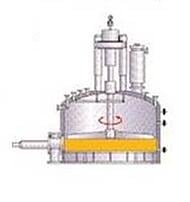
 6. Drying/Cooling
6. Drying/Cooling 7. Discharging
7. Discharging